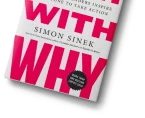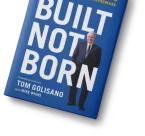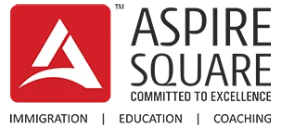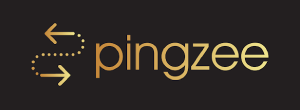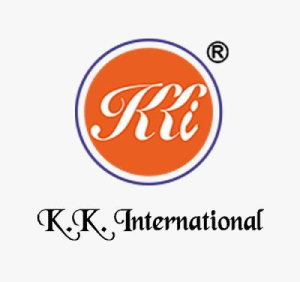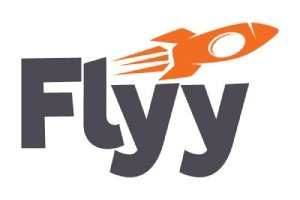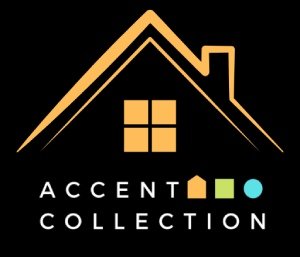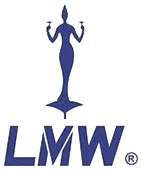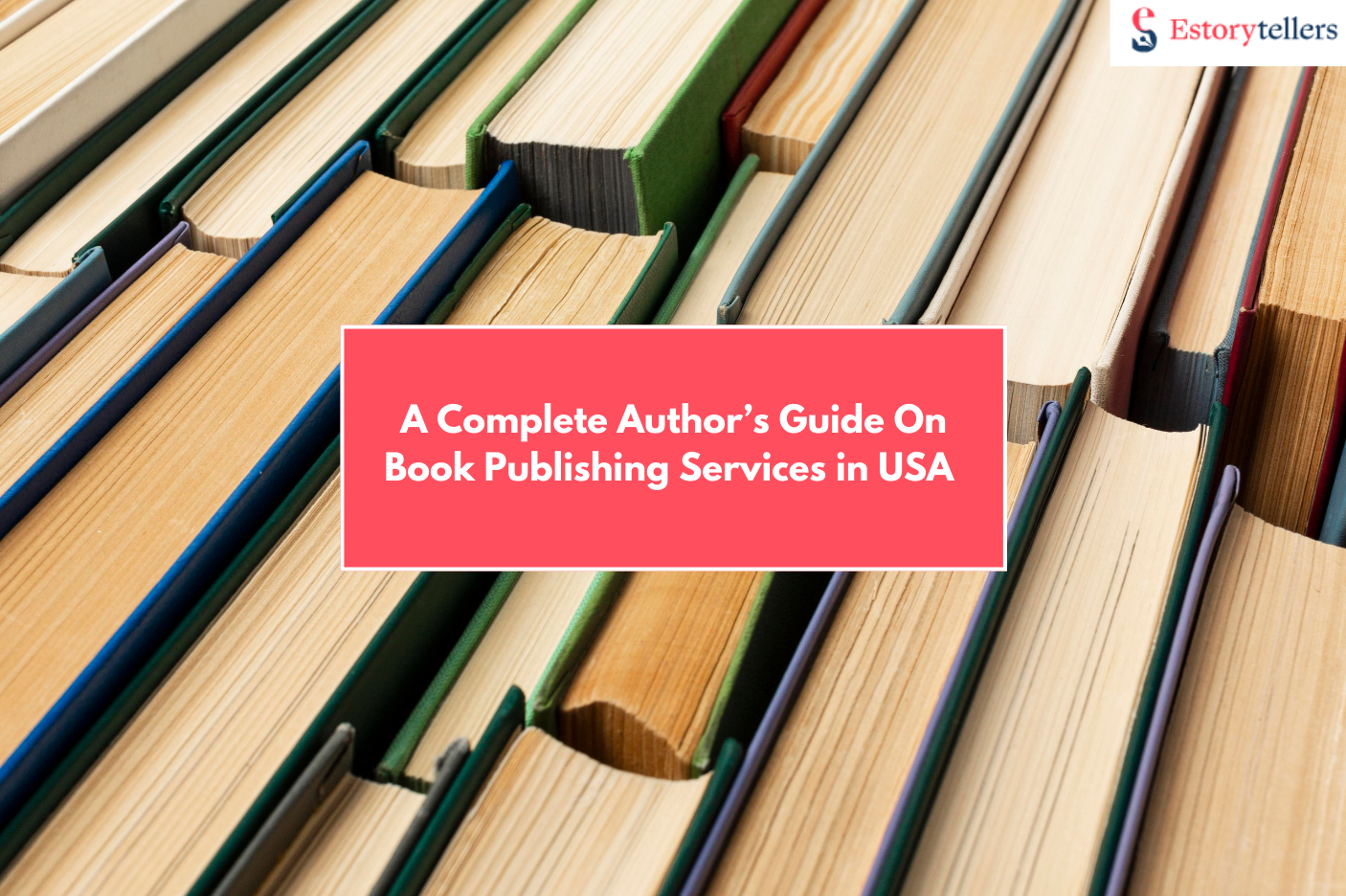
Legitimate book publishing services in the USA are a production-to-distribution pipeline. It must deliver clear, file-ownership deliverables (edits, design files, validated EPUBs, print proofs, metadata), a contract/SOW that protects you, and QA + analytics you can act on. Anything else is marketing. If a provider can’t prove file ownership, distribution channels, and sample QA reports, walk away.
Prepared by Estorytellers, a US-focused production partner with 200+ trade/hybrid/self launches, an editorial QA program, and a standardized SOW/QA framework used on every project. We build books that meet retailer tolerances and survive audits.
What Legit Book Publishing Services in the USA Include (and Don’t)
In the U.S. publishing market, a legitimate publishing service focuses on production, validation, and delivery of files that are accepted by retailers like Amazon, Barnes & Noble, and Ingram. These services exist to give authors professional, retail-ready books, not to promise bestseller rankings or shelf placement unless specifically contracted and backed with proof.
As our Head of Production at Estorytellers puts it: “If it isn’t in the deliverables list with file ownership spelled out, assume you don’t get it.”
Publish Your Book in the USA
Estorytellers helps authors navigate US publishing, from ISBN registration to print and digital distribution across major platforms.
Core Inclusions: What You Should Get From Book Publishing Services in the USA
A genuine U.S. book publishing service typically provides the following:
1. Editorial Support
- Editorial Assessment: A top-level review that identifies structural or narrative issues.
- Developmental Editing: Reshaping structure, pacing, argument strength (for nonfiction), or character arcs (for fiction).
- Copyediting: Line-by-line refinement of grammar, clarity, and consistency.
- Proofreading: Final polish to eliminate typos before file creation.
In the U.S., editing costs usually range from $0.01 to $0.06 per word, depending on the depth of service. Legit providers show you track changes and editor notes; vanity presses often skip this step.
2. Cover & Interior Design
- Cover Design: High-resolution print-ready PDFs (spine width calculated, bleed margins correct) plus digital JPEG assets for online use.
- Interior Typesetting: Done in Adobe InDesign or equivalent, formatted for both print and EPUB. Includes page numbers, headers/footers, and genre-appropriate fonts.
Retailers reject files if margins are off, barcodes are misplaced, or fonts are unlicensed. A professional design ensures your book is print-ready on day one.
3. ISBN & Cataloging
- ISBN Assignment: Assistance in purchasing from Bowker (the only U.S. ISBN agency). Each format (print, eBook, audiobook) needs its own ISBN.
- PCIP/LCCN: Optional but valuable, helps libraries catalog your book. A legit service guides you through Library of Congress applications.
Some vanity presses provide ISBNs under their imprint, which means they not you are not the official publisher. A professional service ensures you own your ISBNs.
4. eBook Conversion
- Formats: EPUB3 (reflowable) and Kindle-ready files.
- Validation: Must pass epubcheck for retailer acceptance.
- Accessibility: Alt-text for images, logical heading structure, and proper metadata tagging.
A book with failed validation files is rejected by Apple Books and often flagged on Amazon. A real provider guarantees compatibility.
5. Print Setup
- POD (Print-on-Demand): Set up on IngramSpark and/or Amazon KDP with proofs included.
- Short-run Digital: For 50 to 500 copies, often used for launch events.
- Offset Printing: For 1,000+ copies, with cost savings per unit.
- Carton Planning: Ensures books ship safely in bulk.
In the U.S., POD dominates indie publishing because it avoids upfront warehousing costs. Offset remains important for business books, textbooks, or event-driven sales.
6. Metadata & Distribution
- Metadata Creation: BISAC codes, keywords, pricing strategies, and descriptions.
- Retail Uploads: Direct to Amazon, B&N, Ingram, Apple Books, Kobo.
- A+ Content (Amazon): Optional enhanced content for sales optimization.
Poor metadata is the #1 reason books fail to surface in searches. Professional publishing services run keyword analysis tailored to U.S. reader behavior.
7. Project Management & Final QA
- Dedicated Production Manager: Single point of contact for author queries.
- Milestone Tracking: Clear deadlines for editing, design, proofs, and launch.
- Preflight Checks: Verifies fonts, margins, embedded images, ISBN alignment, and cover compliance.
- Proof Approvals: Author signs off on digital and print proofs before files are locked.
Without QA, books can be uploaded with errors like missing margins or incorrect ISBNs, leading to costly reprints.
Case Study:
A Delhi author waited 5 months for a response. After Estorytellers’ intervention, editing, formatting, and positioning the manuscript was accepted in just 6 weeks, with full control over files and metadata.
Common Exclusions: Clarify Up Front
These are not usually included unless separately contracted:
- Long-term PR campaigns or ongoing ad spend.
- Dedicated bookstore sales representation or shelf placement.
- Paid review services or influencer outreach.
- Film/TV packaging or agenting (separate industries entirely).
- Ghostwriting (unless you specifically engage for it).
Many vanity presses upsell these services at inflated costs. A transparent publisher will either refer you to specialists or list them as optional add-ons.
From Manuscript to Market in the USA
We guide authors through professional editing, formatting, and US distribution to ensure your book reaches readers nationwide.
Budget & Unit Economics (US Reality Check)
For first-time authors, the cost of publishing a book in the USA is often misunderstood. Many believe hiring one of the top publishing companies in the USA means everything will be handled, but even with the best book publishers in the USA, authors are expected to understand the economics. The reality is simple: you need two numbers before you sign anything, your total project cost and your per-unit cost (unit economics). These numbers determine not just affordability but also long-term profitability.
Why Both Numbers Matter
- Total Project Cost: How much you’ll invest to bring your book from manuscript to marketplace.
- Unit Cost: How much each copy costs you to print and distribute. This dictates your retail pricing, discounting ability, and margins.
- Breakeven Point: Once you know costs, you can forecast how many copies must sell to recover the investment vital for both self-publishing in the USA and assisted publishing.
As our Pricing Analyst at Estorytellers says: “Decide format & run with a break-even, not vibes.”
“With Estorytellers guiding my unit economics, I broke even in under 500 copies. No hype, just precise calculations and proof.” – David L., Business Coach
Typical US Cost Estimate (2025–26 Ranges)
Here are realistic ranges you should budget for when engaging professional book publishing services in the USA. These are not promises but industry averages that vary by vendor, manuscript complexity, and chosen format.
Editorial Costs
- Editorial Assessment: $200 to $2,000. A one-time evaluation of your manuscript’s strengths and weaknesses.
- Developmental Editing: $0.02 to $0.06/word. In-depth structural work—most critical for first-time authors.
- Copyediting: $0.01 to $0.04/word. Polishes grammar, syntax, consistency, and readability.
- Proofreading: $0.005 to $0.02/word. The final typo-catching stage before typesetting.
Example: A 70,000-word manuscript could cost $1,400–$4,200 for a developmental edit and $700–$2,800 for copyediting.
Design Costs
- Cover Design: $250 to $3,000. Ranges from photo-based covers to bespoke illustrations.
- Interior Typesetting: $300 to $2,000. More if your book includes charts, tables, or images.
The best book publishers in USA invest heavily in design because a poor cover can reduce discoverability by 70%.
Digital & Metadata Costs
- eBook Conversion & Validation: $150 to $800. Ensures EPUB3 and Kindle files meet retailer standards.
- ISBN / PCIP / LCCN:
- ISBN: $125 for a single or ~$295 for a block of 10 (via Bowker, the official U.S. agency).
- PCIP: $100 to $250, valuable for library access.
- LCCN: Often free if applied correctly.
- ISBN: $125 for a single or ~$295 for a block of 10 (via Bowker, the official U.S. agency).
Owning your ISBN is non-negotiable if you want to be recognized as the publisher of record rather than Amazon or another retailer.
Print & Production Costs
- Print Proofs & Setup: $25 to $150 per proof copy (excluding shipping).
- POD (Print-on-Demand): Typically $3 to $6 per unit for a standard 250 to 300 page paperback.
- Offset Printing: Requires 1,000+ copies but can drop unit cost below $2.50. Good for large-scale or event-driven launches.
Unit Economics Example: If your paperback costs $4.25 per unit via POD and you price it at $14.99, Amazon’s cut (~40%) leaves you with ~$4.74 profit per sale.
Audiobook Costs (Optional but Growing)
- Professional Narration: $200–$500 per finished hour.
- Context: A 70,000-word manuscript equals ~8 hours of audio, costing $1,600–$4,000. Audiobooks are increasingly vital as over 1 in 5 U.S. readers now consume stories primarily in audio format.
Project Management & Contingency
- Project Management Fee: Often bundled but should cover scheduling, proof approvals, and file delivery.
- Contingency: Add 5 to 10% to your budget for last-minute changes (e.g., reformatting graphs, correcting metadata).
Case Study:
Author X lost ₹3 lakh to hidden charges. Author Y, guided by Estorytellers, avoided overspending with a fully transparent SOW, enabling a successful, cost-efficient book launch.
Budget Planning Takeaways
- Total Project Cost: Expect $5,000 to $15,000 for professional publishing with quality vendors. Low-ball offers under $1,000 often cut corners.
- Unit Cost Awareness: Knowing your per-book cost helps you price competitively within U.S. norms ($14.99 to $16.99 for paperbacks, $4.99 to $9.99 for eBooks).
- Smart Investment: Focus spending on editing and cover design—these directly impact discoverability and reader reviews.
- Long-Term ROI: By setting breakeven points and reprint triggers early, you’ll avoid the common trap of sinking costs without a plan.
Reach US Readers Globally
Estorytellers ensures your book is available on Amazon, IngramSpark, and other US platforms for global visibility.
POD vs short-run vs offset (break-even logic)
Choosing the right printing method is crucial when evaluating book publishing services in the USA. POD (Print on Demand) minimizes inventory risk but has a higher per-unit cost, making it ideal for low-volume backlist or test runs. Short-run digital printing balances cost and quality for 50–500 copies, while offset printing suits large print runs of 1,000+ units with the lowest per-unit price.
Pick based on units you expect to move, quality needs, and cashflow.
- POD (Print on Demand): no inventory risk, higher per unit. Good for low forecast print volumes and steady long-tail sales. Use for test runs and backlist. (KDP Print, IngramSpark.)
- Short-run digital: 50–500 copies. Lower per-unit cost than POD at mid volumes, more color/finish options. Good for events and author stock.
- Offset: best for large runs (usually 1,000+). Lowest per-unit cost with big initial cash outlay (platemaking, shipping, warehousing). Best when you have guaranteed large orders.
Break-even rule of thumb: calculate units where offset unit cost becomes lower than POD. Use carton quantity, freight, and returns assumptions.
US Cost & Break-Even Inputs
Inputs: page count, trim, b/w vs color pages ratio, list price, discount.
Outputs: POD unit cost, offset unit cost by quantity, break-even quantity (BEQ).
Cashflow & returns
If you route through trade distribution, expect returns, reserves, and delayed net terms. Distributors/wholesalers often have 30–90 day reconciliation cycles and return windows. Plan cash flow to account for this lag.
Contracts & SOW That Protect You
A clear SOW (Statement of Work) is critical when working with book publishing services in the USA. It specifies deliverables, rounds of revisions, timelines, and file handoffs, protecting you from hidden fees or delays.
Must-have clauses
A robust SOW should include:
- Deliverables & rounds: list exact deliverables and number of review rounds for edits, cover, and interior.
- Native file ownership: vendor must deliver InDesign files, layered PSD/AI covers, fonts or font licenses, and raw files when project completes.
- Schedule & approvals: milestone acceptance criteria (e.g., “delivery of final proof after author’s written approval”).
- Change-order process: how extra rounds are priced and approved.
- Refunds / kill fees: what happens on termination and how much refund you get.
- Data & analytics access: access to ingestion reports and sales dashboards if vendor handles distribution.
- Termination & handback: return of all files and metadata on termination.
Rights & licenses
- The author should own the copyright. Vendors license production usage only.
- Vendor warranties: confirm all asset licenses (stock images, fonts) are valid and transferable.
- Marketing mockups: short-term usage license is fine; confirm material reuse rights and expiration.
“Estorytellers treated my book like a real product, not a vanity pitch. The SOW clarity saved me thousands in hidden costs.” – James P., Nonfiction Author
Payment & milestones
Tie payments to milestone acceptance, not calendar dates. Example: 30% at SOW, 30% after copyedit sign-off, 30% at print proof approval, 10% at final handback.
Professional Publishing for US Authors
From editing to distribution, Estorytellers provides end-to-end services for authors looking to publish in the US market.
US SOW Checklist
| Category | Line Item | Why It Matters for Authors in the USA |
| Deliverables | Scope of work clearly defined | Lists exactly what files/services you get (no assumptions). |
| Editorial deliverables (edit type, rounds) | Prevents confusion about whether you’re getting developmental edits, copyediting, or just proofreading. | |
| Design deliverables (cover, interior, formats) | Ensures you get both print-ready and digital-ready files. | |
| Native Files & Ownership | Native design files (InDesign, PSD, AI) | You own editable source files, not just final PDFs. |
| Layered cover files with spine + barcode | Critical if you need to adjust trim size, price, or ISBN later. | |
| Licensing & Rights | Font license documentation | Avoids legal issues if fonts were unlicensed. |
| Image/asset license IDs | Proof you can legally use cover art, illustrations, or photos. | |
| Metadata & Distribution | Metadata delivery (BISAC, keywords, pricing) | Required for retailers like Amazon and Ingram. |
| ISBN & PCIP/LCCN allocation | Confirms who buys/manages identifiers (you should own them). | |
| Schedule & QA | Proof schedule & approvals | Sets exact dates for draft/proof submission and author sign-off. |
| QA & preflight checklist | Guarantees files meet retailer standards before upload. | |
| Payment & Risk | Change order process | Defines costs/time for revisions beyond agreed rounds. |
| Refund/kill fee terms | Protection if vendor fails to deliver. | |
| Termination & handback | What happens if you cancel — do you still get files? | |
| Transparency & Analytics | Access to sales/analytics dashboards | Ensures you’re not blind to performance post-launch. |
| Statement frequency & format | Royalty reports monthly/quarterly in standardized formats. | |
| Warranties & Legal | Vendor warrants originality & licenses | Protects against copyright infringement risks. |
| Deflection/indemnity clauses | Clarifies liability if third-party claims arise. |
Hybrid Publishing: Clear Line Between Good Hybrid and Vanity
Hybrid publishing combines elements of traditional trade and paid services, but not all providers are equal. Legitimate book publishing services in the USA offer clear deliverables, real distribution, and retainable files. Vanity setups, in contrast, often charge high fees with little market reach.
Check that the hybrid publisher provides verified bookstore and library access, marketing support, and transparent royalties. Choosing trusted book publishing services in the USA ensures your investment translates into a professional, market-ready book rather than just a printed product.
Good hybrid signals
- Editorial gate: they accept only titles that meet standards, not every paying client.
- Transparent fees: clear breakdown, optional services spelled out.
- Verifiable distribution: named partners (e.g., Ingram, specific sales channels) and proof of bookstore sell-ins.
- Royalty model: royalties on net with clear statements and audit rights.
- The author retains key rights, especially translation, audio, and adaptation rights, unless you consciously sell them.
Vanity red flags
- Guaranteed bestseller claims.
- Opaque “distribution” without verifiable feeds.
- Forced upsells (buy this PR package to get a spot).
- No named production team or no sample deliverables.
- No native file handback.
Acquisitions Advisor: “If distribution can’t be explained and proved, it doesn’t exist.”
Hybrid vs Vanity Scorecard
Criteria: editorial gate / fees transparency / distribution proof / file ownership / royalty clarity. Set weights (e.g., editorial gate 30%, distribution proof 25%, file ownership 20%, fees transparency 15%, royalties 10%). Fail if below threshold.
Mini case: Author left a vanity press post-deposit. New hybrid partner demonstrated distributor invoices and bookstore sell-ins. Result: clean metadata and timely statements; author regained momentum.
“Thanks to Estorytellers, I owned my ISBNs, native files, and retained full rights. Their transparency in U.S. publishing is unmatched.” – Lena R., Historical Fiction Writer
Launch Your Book Across US Platforms
Estorytellers helps you publish and distribute your book on Amazon, Barnes & Noble, and IngramSpark with professional support.
Editorial Quality Control: Get the Right Edit
High-quality editing is essential when using book publishing services in the USA. Professional developmental, line, and copyediting ensure your manuscript meets market standards, improving readability and reducing costly revisions later.
Editors should provide clear rounds, feedback, and track changes so your book is polished before production. Choosing reputable book publishing services in the USA guarantees your story is not just printed, but presented professionally to readers, reviewers, and retailers.
Triage: Which edit do you need?
- Editorial assessment: quick health check (recommended before big spends).
- Developmental edit: structure, argument, narrative arcs. Use for weak structure or messy drafts. EFA and Reedsy rate guides give current ranges.
- Line/Copyedit: clarity, tone, grammar.
- Proofread: final pass for typos and layout issues.
- Special passes: sensitivity readers or SME review (medical, legal topics).
Editorial Director: “Under-editing is more expensive than editing.”
Edit Triage & QC Checklist
- Assessment: objectives & deliverables.
- Developmental: structural report + tracked changes.
- Copyedit: style guide enforcement (Chicago/APA).
- Proof: page-proof pass with sign-off.
Standards & tools
- Use a style guide (Chicago Manual for US trade).
- Track changes, use clear version naming (v1.0, v1.1, etc.).
- Maintain an issue log: note, owner, status.
Case Study:
A first-time fiction author escaped a vanity press and partnered with Estorytellers. Within 6 weeks, files were corrected, retailer-ready, and launched, achieving transparent costs, rights retention, and sales reporting.
Design & Typesetting (US Trade Standards)
Design is quality and usability combined. Bad interiors kill credibility.
Cover
- Spine calculations must match final page count and paper stock.
- POD vs offset constraints: foil, emboss, and special finishes often aren’t available on POD or require short-run offset.
- Barcode & price: barcode position must be correct and show the MRP/price.
Interior
- Trim by genre: trade fiction often 5.5×8.5 or 6×9; poetry and art books differ.
- Typography: choose readable body fonts, set widows/orphans rules, hyphenation rules, and image placement instructions.
- Image licensing: secure commercial rights for all images and keep records.
Estorytellers’ Design Lead: “Great interiors are invisible; readers just keep reading.”
Cover & Interior Spec Sheet
- Trim sizes, margins, gutter allowances, font families, export presets (PDF/X-1a for print), color profiles (CMYK), and bleed specs.
US Publishing Made Simple
We handle everything from editing and formatting to marketing so your book reaches American readers professionally and efficiently.
eBook Conversion Quality (EPUB First)
eBook is not a throwaway conversion. Treat EPUB as a product.
Format choice
- Reflowable EPUB3: standard for most prose.
- Fixed-layout EPUB: children’s books, image-rich cookbooks, or art books.
Accessibility & validation
- TOC, navigation landmarks, alt text for images, proper semantic structure. Run epubcheck before ingestion.
Digital Production Lead: “Accessibility isn’t extra; it’s table stakes.”
EPUB Accessibility & Validation Checklist
- ebook toc, nav landmarks, alt text, language tags, internal links, pagelist handling, epubcheck pass.
Audiobook: When & How
Audio can expand reach but costs money. Plan the business case.
Business case
- Genre fit: nonfiction business and narrative nonfiction sell well in audio; some fiction genres underperform.
- Catalog strategy: producing audio for multiple titles compounds discoverability.
- Narrator strategy: a professional narrator improves sales, so don’t choose a celebrity unless it fits the budget and audience.
Production timeline (10 steps)
- Script prep (audio edit & marks)
- Casting narrator (auditions)
- Contracting & scheduling
- Studio recording or remote booth setup
- Rough cut editing
- Producer edit & quality control
- Mastering to platform specs
- Proof listening and corrections
- Retail file packaging (ACX, Findaway)
- Delivery and retail copies
Audio Producer: “Pick a voice that serves the text, not just celebrity.”
Audiobook Timeline & Spec Card
- Runtime estimate, PFH cost estimate, platform specs (ACX: sample rates, mono/stereo rules).
Print Choices: POD, Short-Run, Offset
Match the print method to your goals.
Match format to the goal
- POD: minimal upfront cost, best for continuous availability.
- Short-run: 50–500 units; better quality and options.
- Offset: best unit cost for 1,000+ units.
Print Manager: “Proof early; proof again after changes.”
Proofs & tolerances
- Check color consistency (ISO/GRACoL), trim variance, and binding. Maintain a damage claim workflow with your printer.
Print Decision & Proof Log
- Format choice, proof dates, color notes, sign-offs, and damage/QA contacts.
From Draft to US Bestseller
Estorytellers transforms your manuscript into a polished book and guides you through US distribution channels for maximum reach.
Data & Analytics You Should Actually Receive
Good analytics are actionable. Raw downloads and vanity rank spikes are not.
What’s realistic
- Retail dashboards (Amazon KDP, Ingram reports) vs distributor statements. BookScan (Circana) coverage is partial. Expect reporting lag and aggregated metrics.
- Don’t expect real-time BookScan for every SKU.
One-page KPI sheet
Essential KPIs and their action triggers:
- PDP views → baseline vs current; action: optimize descriptions or ads if CTR < target.
- Conversion rate (views → sales) → action: split-test covers/descriptions.
- Velocity (units/week) → action: trigger reorder or promo.
- Return % → action: assess supply chain or quality.
- Reviews growth → action: outreach for more ARC reviews if slow.
Analytics Lead: “A KPI isn’t real until it triggers a decision.”
Publishing KPI Sheet
Metric ▸ Target ▸ Action Rule (e.g., PDP views 1,000/wk ▸ CTR <1% → run A/B cover test).
Project Management & Orchestration
You need a single source of truth (SSOT).
SSOT (single source of truth)
- Central file repo (cloud), metadata spreadsheet, change log, and owner assignments for each line item.
- Ensure one owner per deliverable.
Change control
- Limit rounds; price additional rounds. Every change must have cost/time impact approvals.
Production Board
Kanban/Gantt view with stages: Manuscript → Edits → Design → Proof → Print Setup → Ingestion → Live.
Final Quality Assurance
Handoff is a gate; fail it and you pay later.
Preflight
- Fonts embedded, image DPI >=300, correct color profiles, barcode/price check, EPUB validation.
Distribution readiness
- ISBNs mapped to formats, metadata parity across retailers, ingestion tests for Amazon/Apple/Ingram.
QA Lead: “Handoff is a gate, not a guess.”
Final Preflight & Handoff Checklist
- Print preflight, ebook epubcheck pass, metadata spreadsheet, retailer test ingestion, final native file handback.
Conclusion
Navigating book publishing in the USA can feel overwhelming, but the key is clarity, transparency, and professional support. From editorial assessment to cover design, eBook conversion, POD or offset printing, and analytics, every step must be defined, measurable, and backed by file ownership.
Estorytellers shows that professional book publishing services in the USA protect author rights, provide retailer-ready books, and deliver real outcomes like faster launches, verified timelines, and cost transparency. This ensures your manuscript becomes a market-ready book with measurable success.
Our case studies show real outcomes: faster launch timelines, clear SOWs, cost savings, and full control over ISBNs and native files. By understanding total project costs, unit economics, and hybrid vs. vanity publishing distinctions, authors can make informed decisions that protect their investment and maximize long-term ROI.
In short, a professional, structured approach like the one Estorytellers offers turns manuscripts into market-ready books with measurable results, whether you’re self-publishing, hybrid publishing, or looking for expert guidance to reclaim control from vanity presses. Focus on process, proof, and professional quality, and your book’s success in the U.S. market becomes achievable and sustainable.
FAQs
What should “book publishing services” include in the US?
They should include editorial (level-appropriate), design (cover + interior native files), ISBN & cataloging support, ebook conversion, print setup (POD/short-run/offset), metadata & BISAC, project management, final QA, and native file handback. Anything not listed in your SOW is optional and should be contracted separately.
How much should I budget and how do I choose POD vs offset?
Budget for editing, design, ebook conversion, proofs, printing, project mgmt, and contingency. Use break-even math: if offset unit cost × qty + freight < POD unit cost × qty, offset is cheaper at that quantity. If you expect modest sales, use POD to avoid inventory risk and cash outlay.
What must be in my contract/SOW?
Deliverables, rounds, native file ownership, font/asset license warranties, schedule & approvals, change-order process, refunds/kill fees, analytics access, and termination/handback clauses. Tie payments to milestone acceptance.
How do I tell good hybrid from a vanity press?
Good hybrid has an editorial gate, transparent fees, verifiable distribution, royalty statements, and returns policies. Vanity often promises bestsellers, forces upsells, lacks named teams, and won’t hand back native files. Ask for distributor invoices and sample SOWs.
What does quality editing/design/ebook conversion look like?
Quality editing includes tracked changes, a style guide pass, and sign-off. Design uses trade trim sizes, embedded fonts, and readable typography. EPUB conversion passes epubcheck and includes TOC, alt text, and navigation landmarks.
Should I add an audiobook now or later?
Consider audiobook if your genre performs in audio (business, narrative nonfiction, thrillers). Audiobook production is costed per finished hour; factor narrator selection and distribution (ACX/Findaway). If budget is tight, plan audio for the second wave or a boxed-set release.
What analytics will I actually see post-launch?
Expect retailer dashboards (PDP views, conversion), distributor sell-in reports, and periodic royalty reports. BookScan/Circana is partial coverage. Use a KPI sheet to tie metrics to actions (e.g., when velocity drops, trigger promo).
How do I keep the project on schedule?
Use a single source of truth (cloud folder + metadata sheet + Kanban/Gantt). Assign an owner for each deliverable and require change-order approvals. Weekly 20-minute production check calls avoid surprises.
What is final preflight/handoff?
A preflight is the final technical gate: print proof approval, epubcheck pass, metadata parity, and ingestion tests. Handoff means you receive final native files, proofs, and the metadata package for long-term control.







